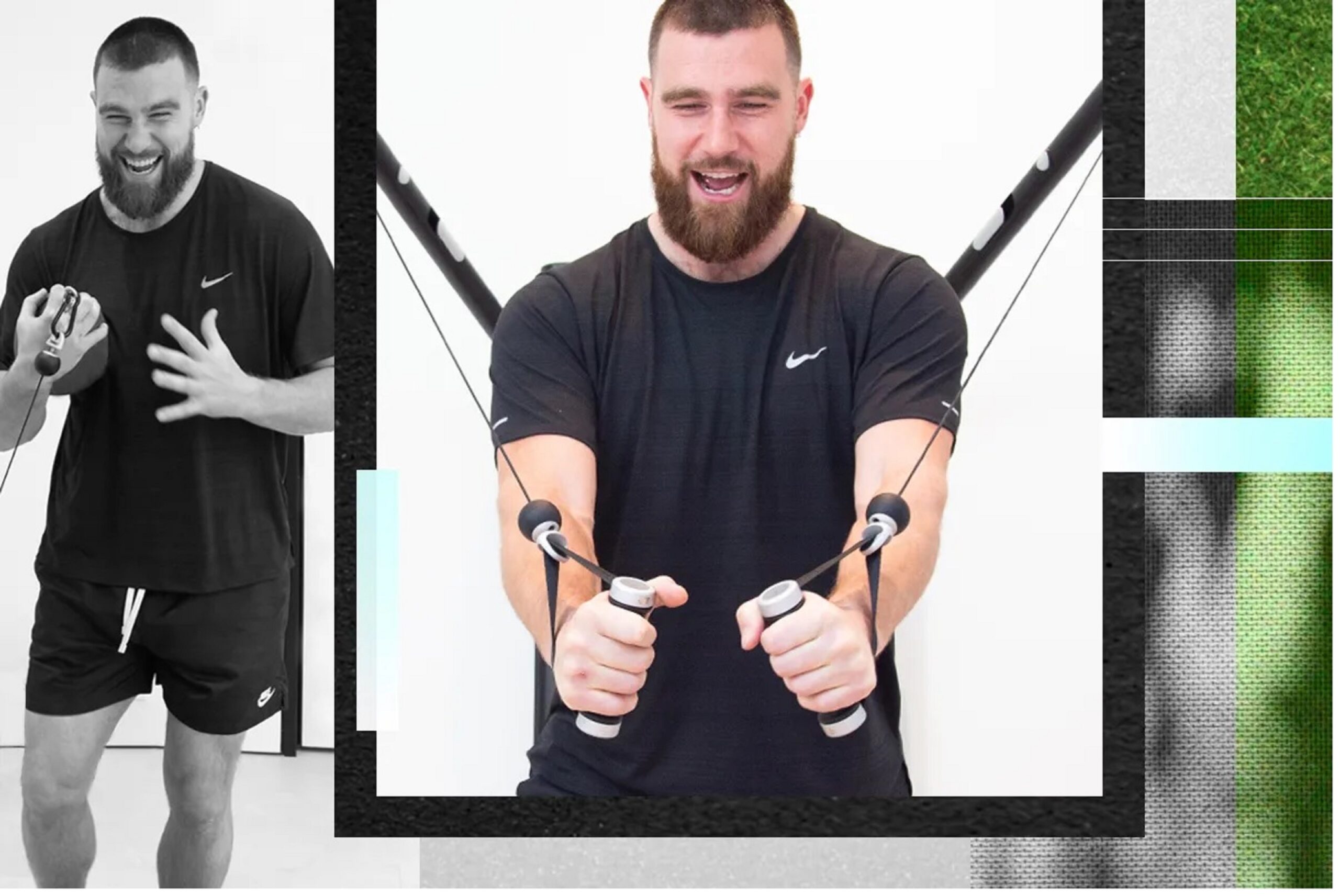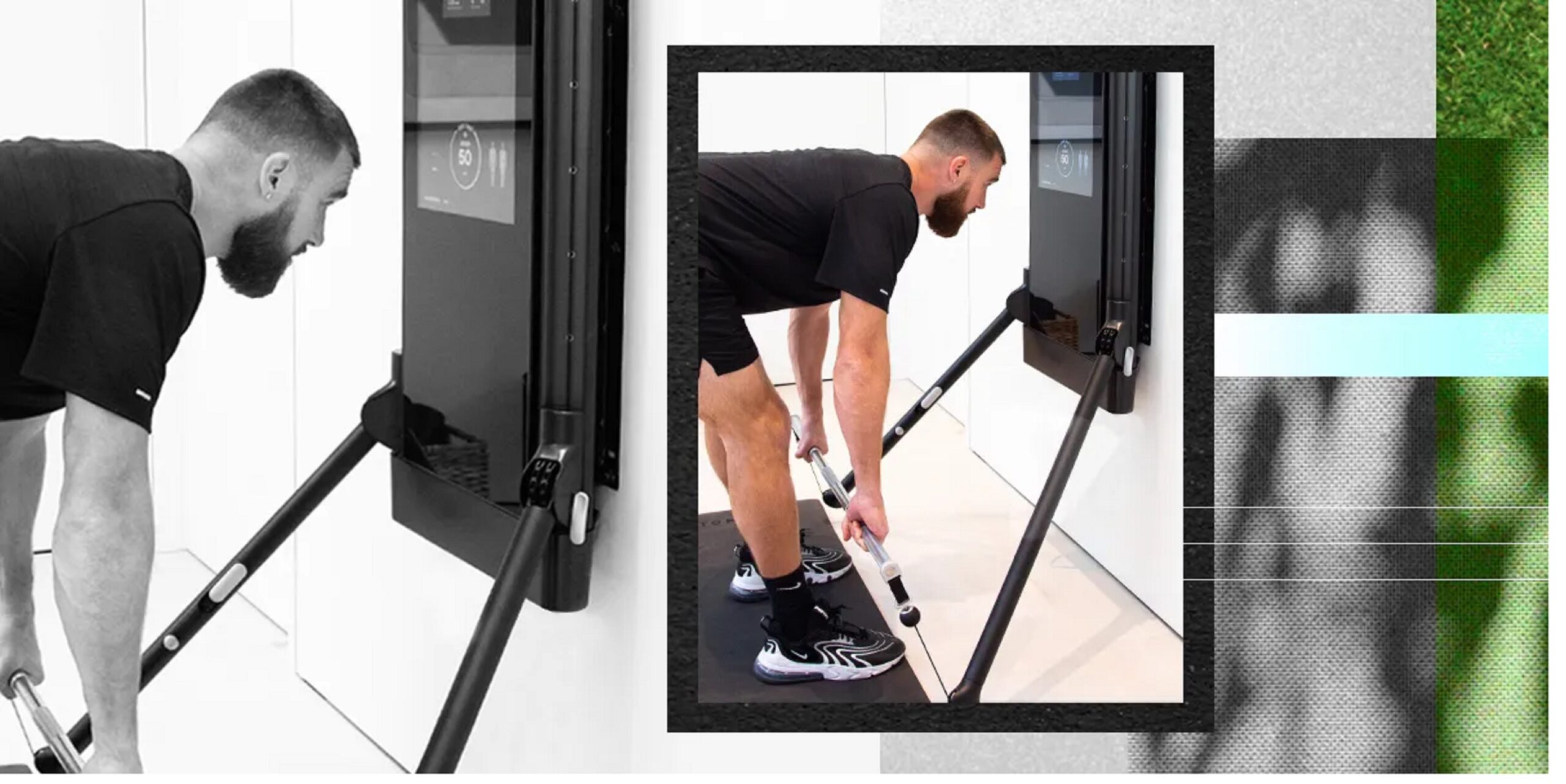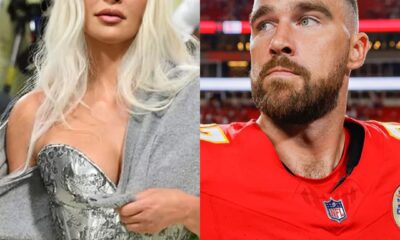CELEBRITY
When it comes to his training regimen, Travis Kelce pays close attention to detail. He emphasizes the importance of sweating the small stuff, stating, “I love working on my body and keeping it in top shape.”

according to tight end Travis Kelce, if you want to play pro football, you practically have to live in a squat rack. But after nine seasons in the league, seven Pro Bowl appearances, and a few surgeries on his ankle, knee, and shoulder, Kelce has transitioned from the days when loading up a bar and pushing big weight were essential to his routine. These days, he’s focused on staying healthy and keeping accessory muscles firing.“The small stuff that happens in the training rooms and the rehab rooms, I’ve learned to adapt that into my actual workouts,” he said in an exclusive interview with Tonal. “I’m not just doing it when I’m injured or I’m in the training room trying to make something feel better, I’m doing it so that I can prevent anything from happening to my body.”
Kelce talks a lot about his attention to pre-hab (the mobility and stability stuff you do to avoid injuries) and rehab (the stuff you have to do after you get hurt). He talks through his anatomy like a science teacher or a physical therapist. It’s no wonder he’s had the nickname “Trainer Trav” since high school.The story of Trainer Trav goes like this: As a 15-year-old sophomore at Cleveland Heights High School in Ohio, Kelce found himself ineligible for football. “I was a knucklehead,” he said. His father was adamant that Kelce wouldn’t simply sit around with extra free time. So if the young Kelce wasn’t going to don a jersey that season, he would be on the sidelines.“I was the waterboy,” Kelce said. “I was getting everybody water. I was taping ankles, taping wrists. It was fun just to be around the guys and be part of the team and keep my silly self out of trouble.”
That’s when he started acting like a team trainer and his appreciation for kinesiology was born. Add in the nine separate surgeries plus the physical therapy sessions that followed, and Kelce evolved from a student to an expert of his own body.You have to feed yourself with that knowledge,” he said. “You have to understand, what’s the best way that I can get my body ready…You’re not going to be around somebody every single time you work out or every single time you train, so you’ve got to take it into a professional mindset and think, this is what I need to do to be ready.”That means the Kansas City Chiefs’ star is zeroed in on bulletproofing his body instead of building brute force. “That’s just where I’m at in my career,” he said.
If that sounds like he’s on the decline, he’s not. The 32-year old is arguably the best tight end in football. He’s recorded four straight seasons with 90-plus catches and six consecutive with 1,000-plus receiving yards—more than any other tight end in history.Kelce’s consistency is as impressive as his versatility. Tight ends are essentially football’s version of baseball’s utility player: They move wherever they are needed. “We’ve got to do everything,” Kelce said. “You need an electrician? You need a plumber? Whatever you need, I got you.”,,At 6-foot-5, 255 pounds, Kelce might be tasked to protect his quarterback by matching power and strength with a charging 300-pound defensive linemen on one play and required to plant his foot and sprint by a cornerback with world-class speed and lateral quickness on the next snap.
To prepare, Kelce said he keeps a ready-for-whatever mindset focused on “what makes the body go.” He builds a strong foundation through sets of movements aimed to activate his core and posterior chain before moving on to the smaller muscles and joints—ankles, knees and shoulders. For Kelce, that’s one of the big draws of Tonal. There’s enough resistance to move moderate weight, but he can also accomplish all foundational movements on the trainer at home.“It definitely satisfies my needs,” he said. “Especially for something that’s in the house where I do a lot of my pre-hab, my rehab, the small intrinsic muscles. The rehab and prehab stuff, that’s where I like to focus a lot of my work. And that’s not to say [you can only lift] light weight by any means,”—a lesson he learned the hard way after adding a few deadlifts to the mix.


























